When someone mentions California National Parks, you probably envision the immense granite walls of Yosemite or the towering trees of Redwood National Park. Did you know that California, with the 9 major National Parks is the state with the most parks? And even more surprising California is home to another 19 unique National Park Sites. Discover some of these off the beaten path parks right here!
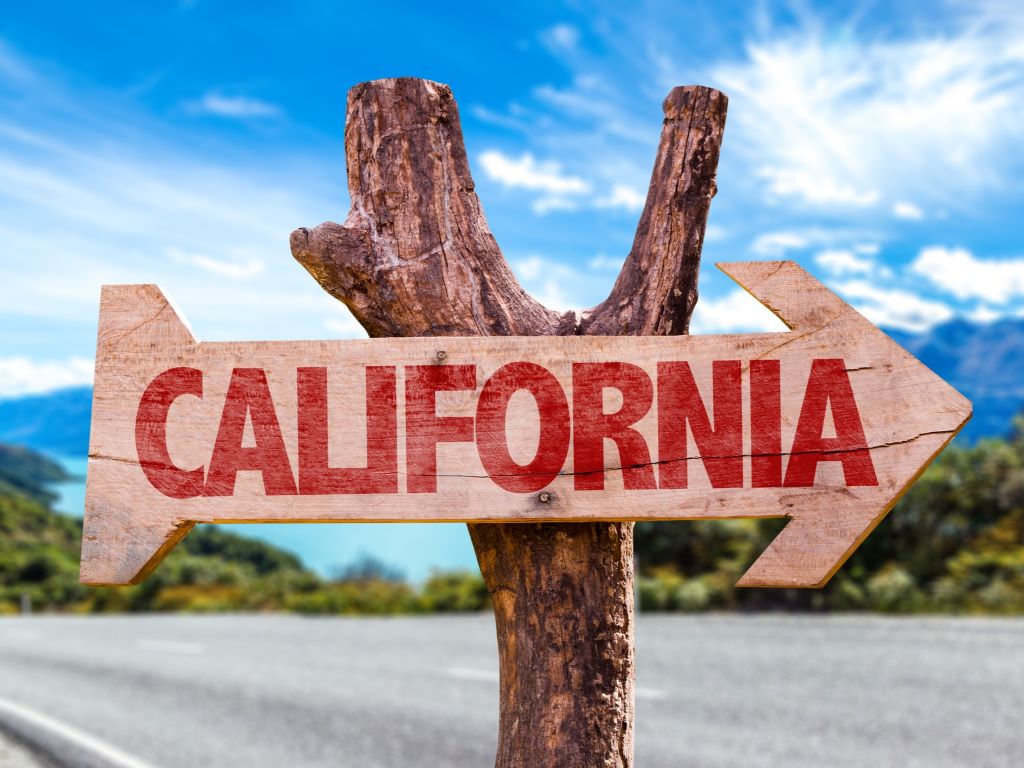
I reached out to fellow travel writers to share some of their favorite National Park Sites. These include National Monuments and Historic Sites that pay tribute to important people and history in the growth of our country. And include places, like National Recreation Areas and National Seashores, where treasures of nature are protected for our use today and in the future.
List of California National Parks
Traditional National Parks
- Channel Islands National Park
- Death Valley National Park
- Joshua Tree National Park
- Kings Canyon National Park
- Lassen Volcanic National Park
- Pinnacles National Park
- Redwoods National and State Parks
- Sequoia National Park
- Yosemite National Park
National Park Sites
- Cabrillo National Monument
- Castle Mountains National Monument
- César E. Chávez National Monument
- Devils Postpile National Monument
- Eugene O’Neill National Historic Site
- Fort Point National Historic Site
- Golden Gate National Recreation Area
- John Muir National Historic Site
- Lava Beds National Monument
- Manzanar National Historic Site
- Mojave National Preserve
- Muir Woods National Monument
- Point Reyes National Seashore
- Port Chicago Naval Magazine National Memorial
- Rosie the Riveter/World War II Home Front National Historical Park
- San Francisco Maritime National Historical Park
- Santa Monica Mountains National Recreation Area
- Tule Lake National Monument
- Whiskeytown-Shasta-Trinity National Recreation Area
National Parks in California
The 9 major California National Parks make a great road trip all by themselves. Brad and I loved our road trip through 7 of these amazing parks last September. You might wonder what’s the difference between a traditional National Park and a National Park Site. In general a National Park has multiple usage and historical value. While a National Park Site
Map of California National Parks
Here’s a map that shows the location of the California National Parks. As you see many parks are clustered together, making it fun to create road trips among the parks!
California National Park Sites
There are 19 National Park Sites in California in addition to the 9 major National Parks. Each has an interesting story. Here’s an overview of each park.
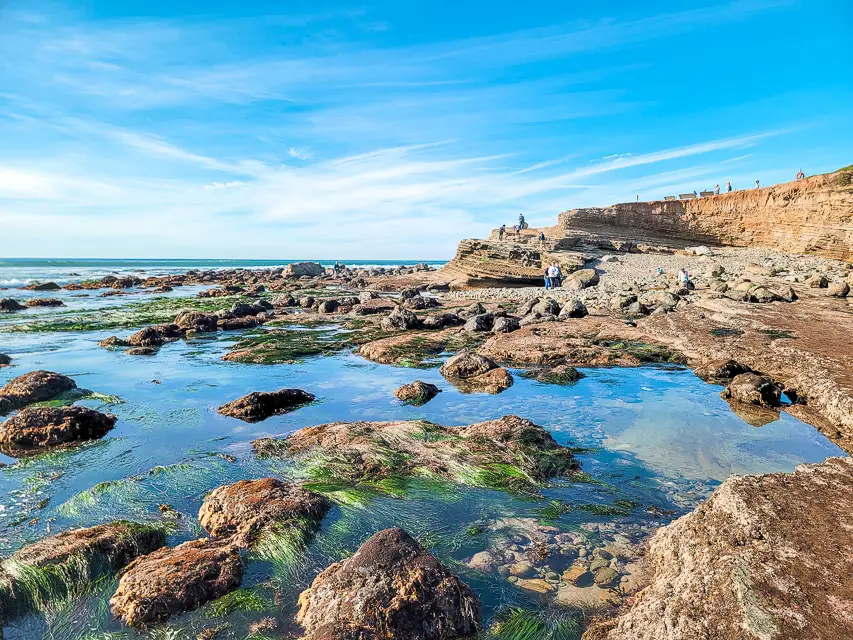
Cabrillo National Monument
Recommended by Stephanie of USA Adventurer
Location: San Diego – at the tip of the Point Loma peninsula
Fees: Yes, per person or per car
NPS Website
Cabrillo National Monument has a rich history and fascinating natural wonders, and deserves a place on any San Diego itinerary. To start, there’s a monument to Juan Rodriguez Cabrillo. He was the first European to explore the West Coast of the United States in 1542.
You can stop by the Visitors Center to learn more about the history of the area. Walk up to the historic Point Loma Lighthouse, which was constructed in 1854. Here, you can enjoy incredible views over the ocean and Coronado Island, visit the inside of the lighthouse, and learn a little about naval history in San Diego.
The best part of a visit to Cabrillo National Monument, though, is visiting the tide pools. During very low tide, tiny pools of water are captured between the rocks along the coastline. Visitors can walk along the shore and carefully admire the different sea life living on and in these tide pools. You can see animals like anemones, barnacles, starfish, crabs, sand dollars, and many more.
If you want to visit the tide pools, it’s very important to check the low tide schedule – the tide needs to be 0.7 or lower to be able to visit the beach – it’s inaccessible when the tide is higher. Plan to arrive about 1 hour before peak low tide to get the best experience. We loved the beautiful views at Cabrillo, but especially loved exploring the rocky tide pools and discovering interesting sea creatures.
Finally, although Cabrillo National Monument is right across the bay from downtown, there is limited cell service here, particularly at the tide pools, so plan ahead.
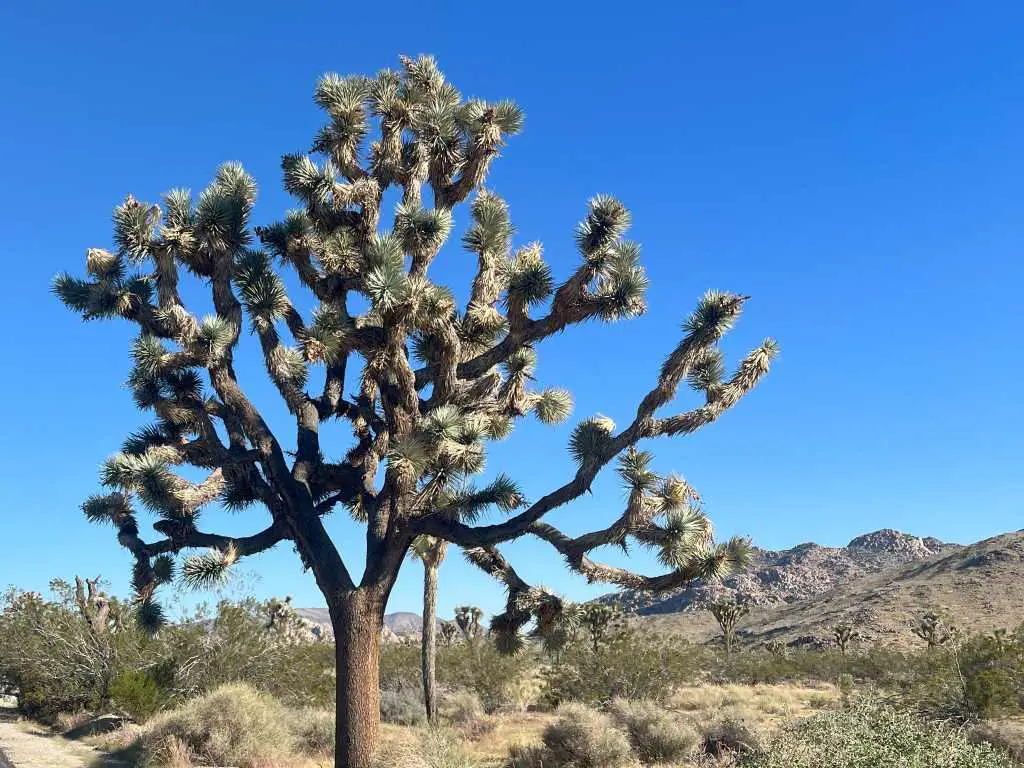
Castle Mountains National Monument
Location: On the West Side of Mojave National Preserve, 1.5 hours South of Las Vegas
Fees: None
NPS Website
Castle Mountain National Monument protects over 20,000 acres of relatively intact desert ecosystem. It is home to gorgeous Joshua Tree forests and expansive desert grasslands. You’ll also find pinyon pine and juniper forests at higher elevations making for a diverse system. Bird watching is interesting as the desert is in a migratory path. While desert bighorn sheep thrive here, they are a bit harder to find.
This is also a place that defines remoteness in the desert. Most roads require high clearance 4 wheel drive for safe passage. And when you are not busy watching for deep car-wrenching ruts, you must keep an eye out for tortoise crossing the road. Make sure you are well prepared for all types of emergencies, including bringing lots of water, when visiting this intriguing place.
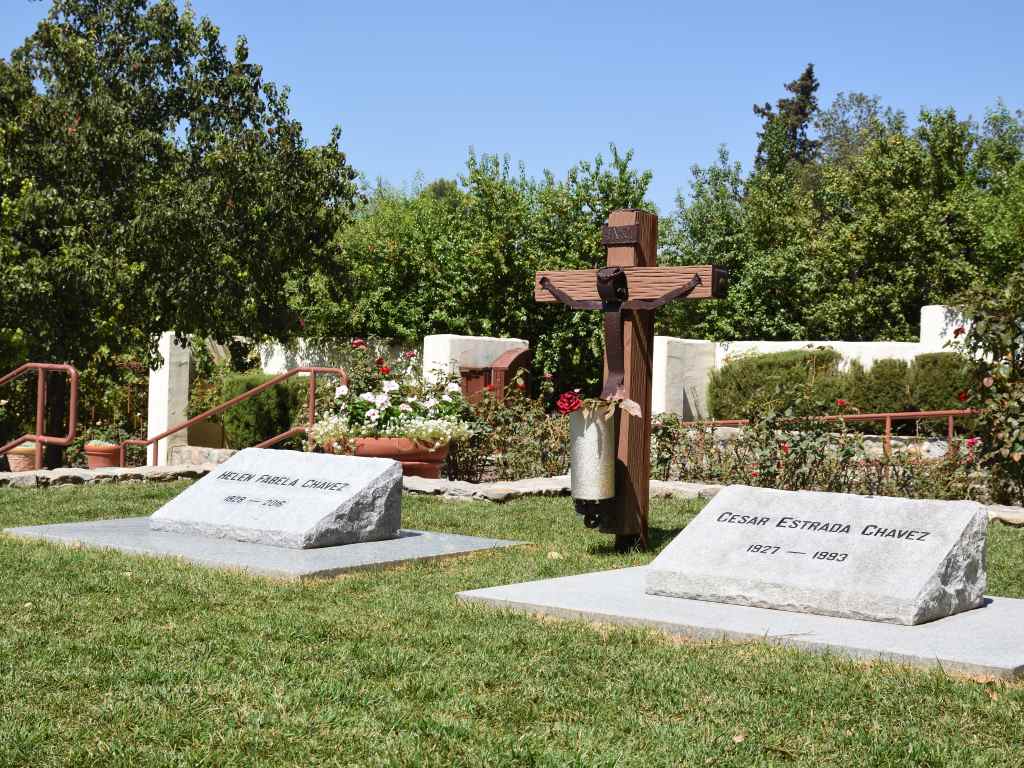
César E. Chávez National Monument
Location: Keene, Kern County, California, located about 30 miles Southeast of Bakersfield
Fees: None
NPS Website
I remember, as a child, watching the farm worker strikes of the 60s and 70 in the news. The movement really brought to life the hardships of the people who brought our fruits and vegetables to our tables. Beginning in the 1960s, Cesar Chavez led thousands of farm workers to unit and form a union of agricultural workers. At this National Monument you’ll discover the depth of work that went into changing the lives of farm workers. From simple actions like creating healthy work environment by adding bathrooms to bold actions that lead to strikes until contracts were signed. Chavez was a force that created change.
The 100 acre site was home to la Paz, which was both the home of the Chávez family and the meeting place for farmworker-movement organizations. Today it is also home to the memorial garden and educational centers.
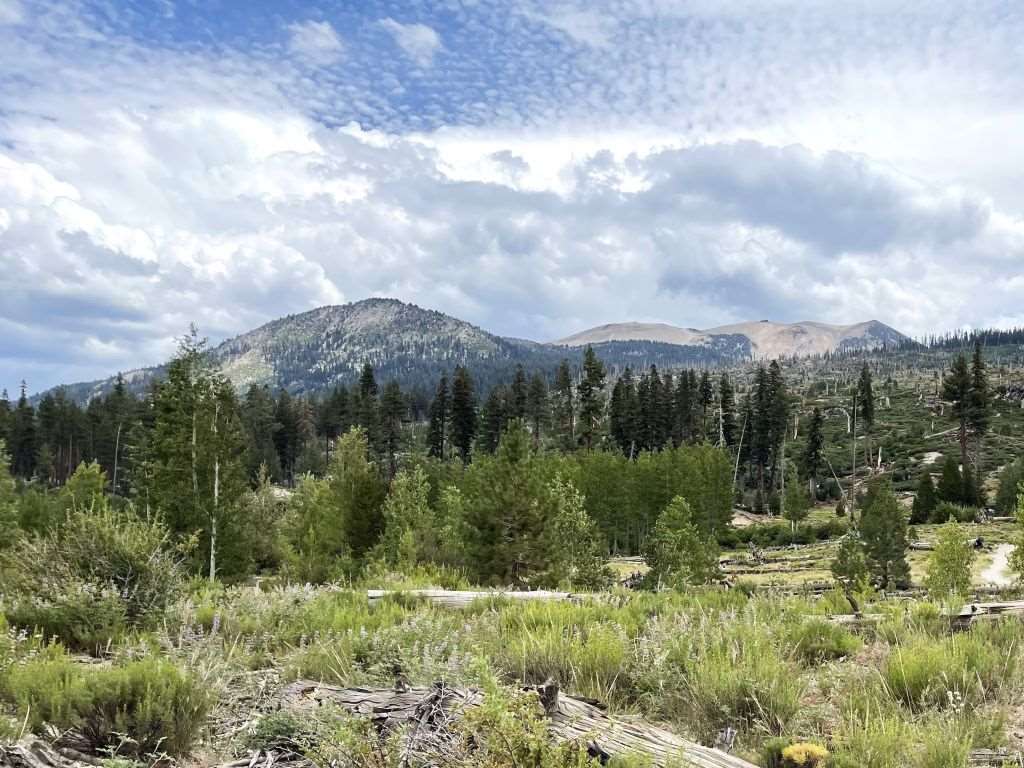
Devils Postpile National Monument
Recommended by Dhara of Roadtripping California
Location: Southeast of Yosemite National Park, off Highway 395
Fees: Yes
NPS Website
Devils Postpile National Monument is a must-visit if you are exploring eastern California on a Highway 395 road trip or you are vacationing in Mammoth Lakes. It’s an easy drive from Lake Tahoe or Mammoth Lakes.
The monument protects a centuries-old formation of basalt columns created by geological forces. This formation of columnar basalt is deemed one of the best on the planet. The site also contains the stunning Rainbow Falls and spectacular scenery around the San Joaquin River.
I loved the tranquility here, and the grandeur of nature on display! When we visited in the early summer, I loved all the wildflowers in bloom along the trails, especially on the waterfall hikes.
The hike to Rainbow Falls is one of the best things to do in Devils Postpile National Monument. The waterfall plunges into a gorge and makes for a great photo op! Looking for wildlife is another fun thing to do here. You will likely see deer and smaller animals such as marmots during the day, as well as a variety of birds. Admiring the basalt columns is of course one of the top activities in Devils Postpile National Monument. You can even climb to the top of the columns via a short but steep trail.
Note that Devils Postpile is closed to vehicular traffic during the colder months of the year. And in the summer, most visitors will need to take the mandatory shuttle from Mammoth Lakes. It can get crowded during the day, so start early!
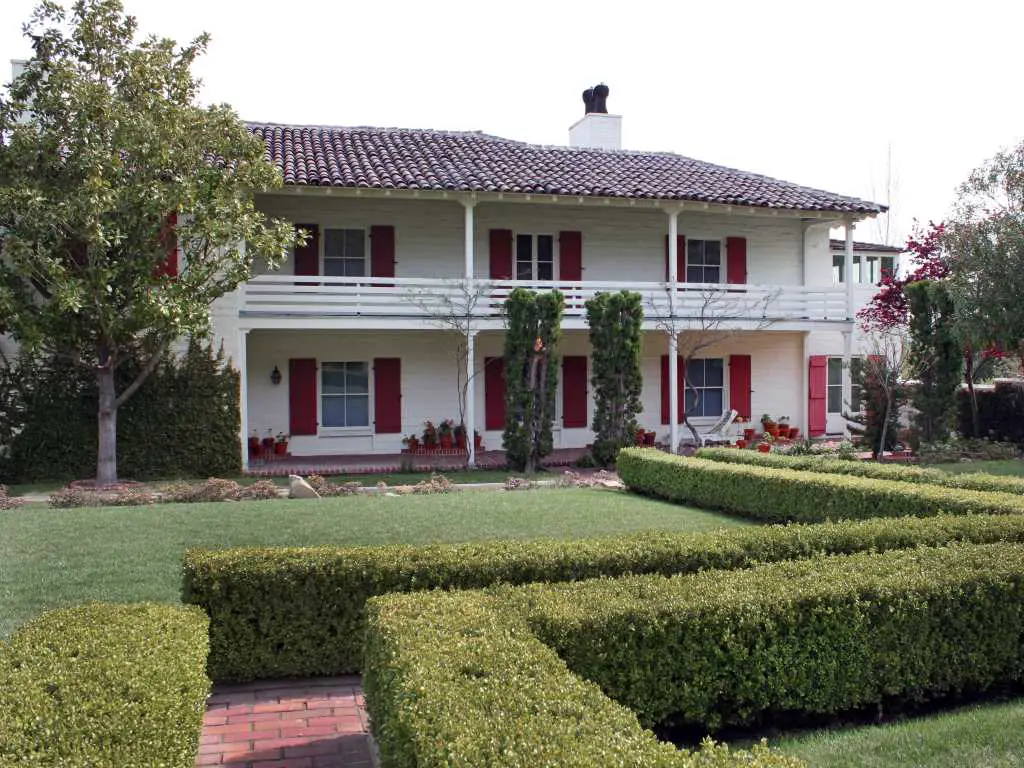
Eugene O’Neill National Historic Site
Location: Danville, California, about an hour East of San Francisco
Fees: No, but reservations required for most tour times
NPS Website
Nobel Prize winning playwriter, Eugene O’Neill made his home in California while writing his last plays. They called their home the Tao House, utilizing an unique blend of Chinese and Spanish influences on the design and décor. His home has become a National Historic Site, honoring his work.
Tours are available Wednesday through Saturday. Because this intriguing home is in a private residential area, most days require a reservation 2 weeks in advance. The tour shuttle bus leaves from The Museum of the San Ramon Valley in Danville. While you are here, make time to explore the museum.
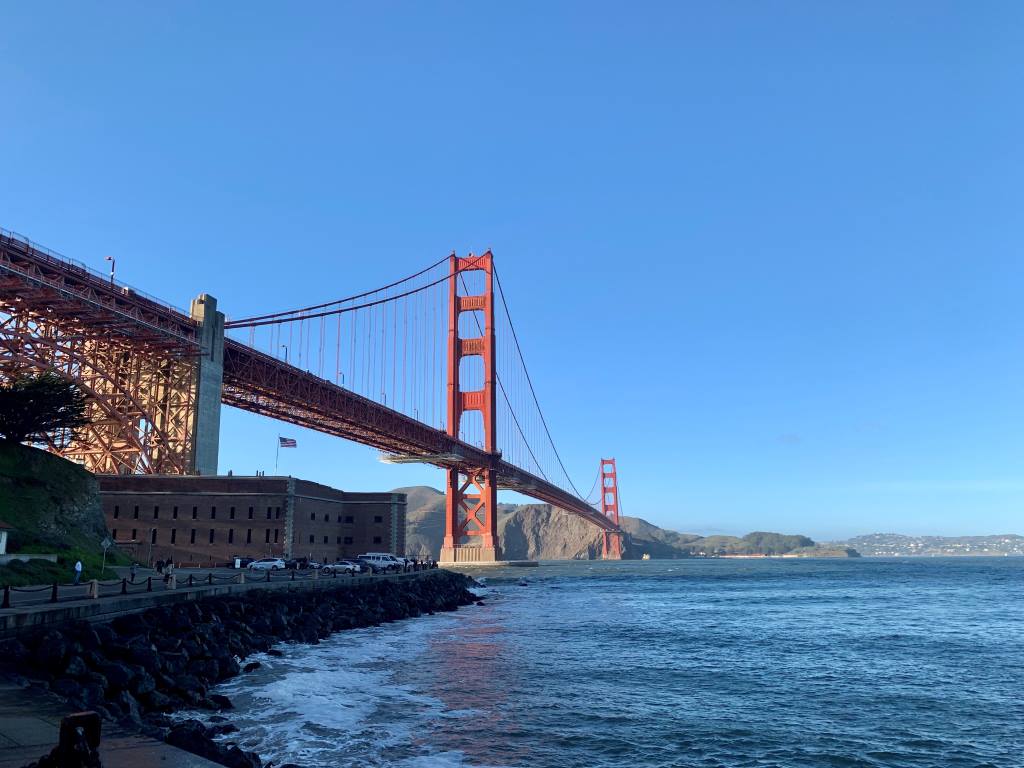
Fort Point National Historic Site
Recommended by Sydney at A World in Reach
Location: San Francisco at the Golden Gate Bridge
Fees: None, open Thursday through Monday, 10:00am-5:00pm
NPS Website
For a more unique viewpoint of the Golden Gate Bridge, head below it to Fort Point National Historic Site.
Fort Point is a masonry fort that was constructed to protect San Francisco Bay from enemy ships during the American Civil War. The US Army Corps of Engineers completed the Fort in 1861, just before the start of the Civil War. During the War, the Fort was armed with artillerymen who stood guard, ready to protect the Bay from a Confederate Attack that fortunately never came.
Use of the Fort continued through the 20th Century, first being remodeled for possible use as detention barracks during World War I and then later being used during World War II to guard the Bay from submarine attacks.
After World War II, efforts to preserve the Fort as a Historic Site were made, and Fort Point became a designated National Historic Site on October 16, 1970. The combination of the Fort’s military history and architecture with the outstanding views of the Golden Gate Bridge have made Fort Point one of the best things to do in San Francisco.
When I visited Fort Point, I loved being able to stand below the Golden Gate Bridge, seeing the orange beams from a more unique perspective. As a history buff, I also really enjoyed learning more about the site’s past. Fort Point is located beneath the southern anchorage of the Golden Gate Bridge. Admission is free and no tickets are required.
If you’re looking for more things to do after your visit to Fort Point, consider exploring the Presidio in the nearby Golden Gate National Recreation Area.
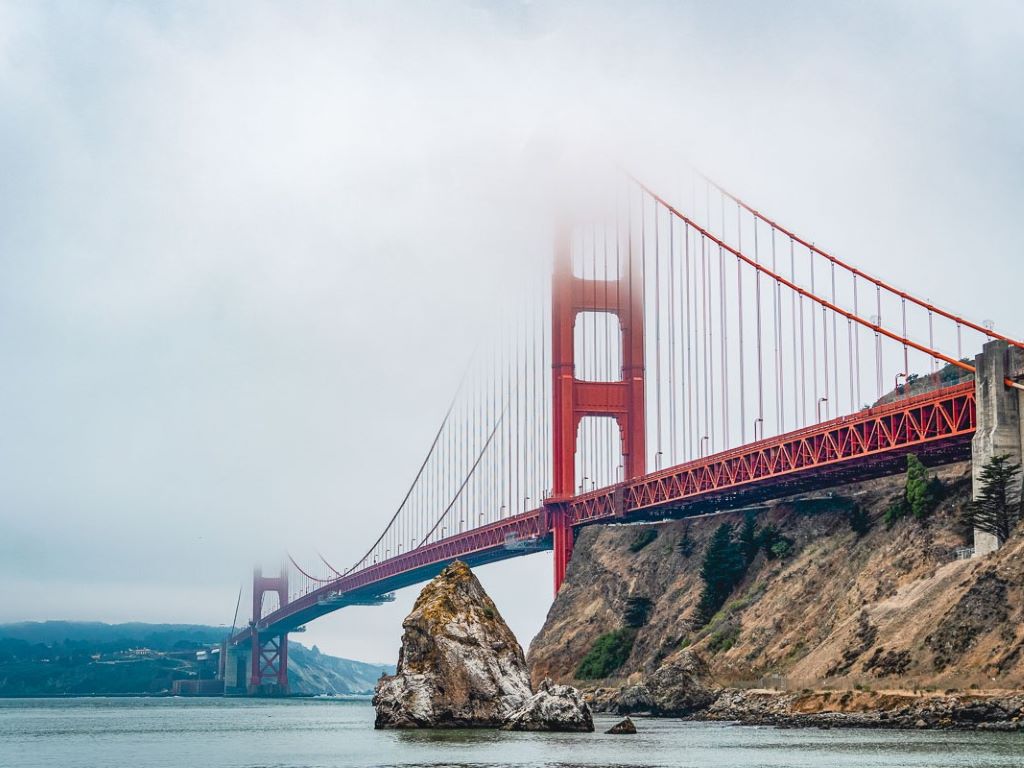
Golden Gate National Recreation Area
Recommended by Cat at Nomadicated
Location: San Francisco at the Golden Gate Bridge
Fees: None, open Thursday through Monday, 10:00am-5:00pm
NPS Website
The Golden Gate Bridge attracts millions of visitors each year from around the globe. However, it is just a part of the vast Golden Gate National Recreation Area. Stretching over 60 miles of coastal areas, it connects San Francisco to Sausalito, California. This expansive park serves as a sanctuary for nature enthusiasts seeking solace from the urban city life of the Bay area.
Established in 1972, this recreation area is one of the larger urban national parks in the country, covering 1,013 acres. This place is essential to biodiversity conservation with 19 distinct ecosystems supporting over 2,000 plant and animal species.
Having driven from LA to see SF’s iconic Golden Gate Bridge, our worries grew as the famous bay fog enveloped the landscape in an ethereal whiteout. However, as we patiently waited at the viewpoint, the fog dissipated, gradually revealing the bridge from behind the gray curtain. It was a triumphant moment as I finally checked off another item from my bucket list.
Apart from the famous bridge, the Golden Gate National Recreation Area offers extensive hiking trails, as well as outdoor activities like biking, camping, and horseback riding. Delve into the park’s history by exploring its historic structures, such as the Presidio, a former military fort, or venture to the ruins of the Sutro Baths.
To reach the Golden Gate National Recreation Area, one can easily access it from both the northern and southern ends of the Golden Gate Bridge. You can drive or utilize public transportation to various entry points, with plenty of parking options available.
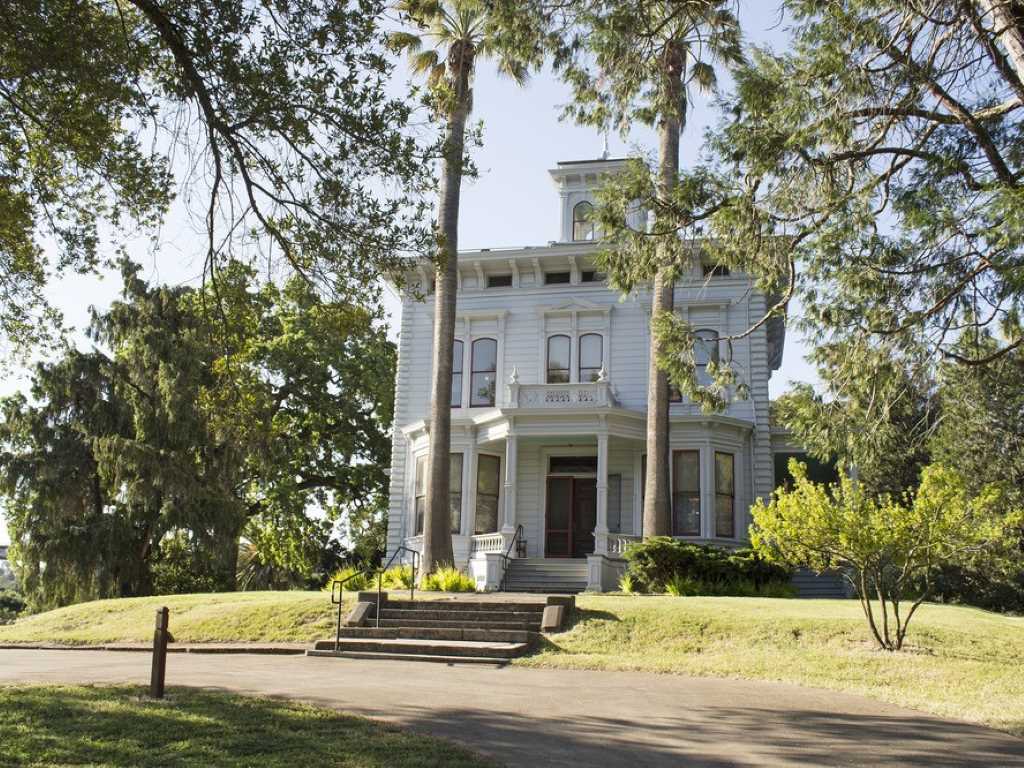
John Muir National Historic Site
Location: Martinez, California, less than an hour East of San Francisco
Fees: None, open Thursday through Monday, 10:00am-5:00pm
NPS Website
John Muir is often called “The father of the National Park Service” because his persistent efforts to led to the establishment of the first National Parks: Yosemite, Sequoia, Grand Canyon and Mt. Rainier. He was a dedicated naturalist, committed to educating leaders in the value of conserving the natural wonders of the west.
At the John Muir National Historic Site you can explore the home of his last 24 years. The grounds include 326 acres of oak woods and grasslands where you can hike the same trails that Muir walked with his daughters. Rangers offer a variety of educational programs and hikes to carry on his tradition. Check the calendar for program schedules as you plan your visit.
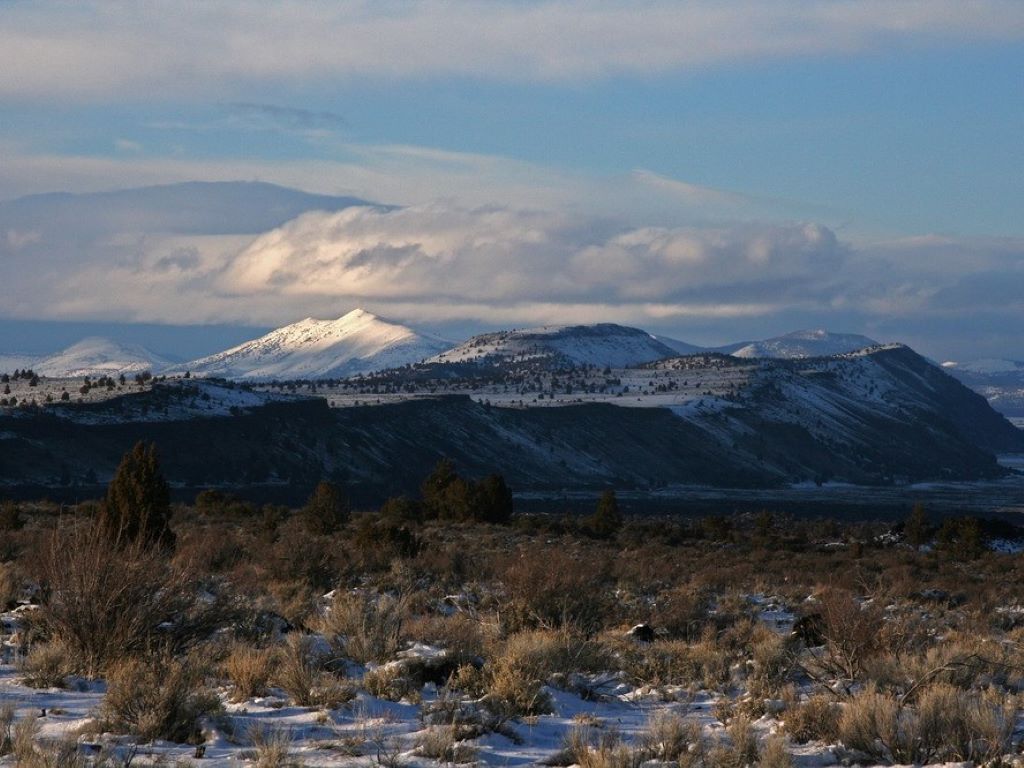
Lava Beds National Monument
Location: On the border of Oregon and California
Fees: Yes, note free caving permits can only be obtained 10am-4:30pm
NPS Website
The first time we discovered lava caves was in Craters of the Moon National Monument in Idaho and we had so much fun poking around. Well, Lava Beds National Monument is an extreme version of that with over 800 lava tube caves. 24 caves are open for you to explore. You can get a free caving permit at the visitor center where you can also get information on what to expect. You’ll find caves that meet every experience level here.
You’ll also find a variety of hiking trails through the lava beds. We found that lava provides a rough and sometime sharp surface for hiking so make sure you bring sturdy shoes or boots. There are opportunities to learn about the many species of bats that live in the caves. And petroglyphs can be found at several locations in the park.
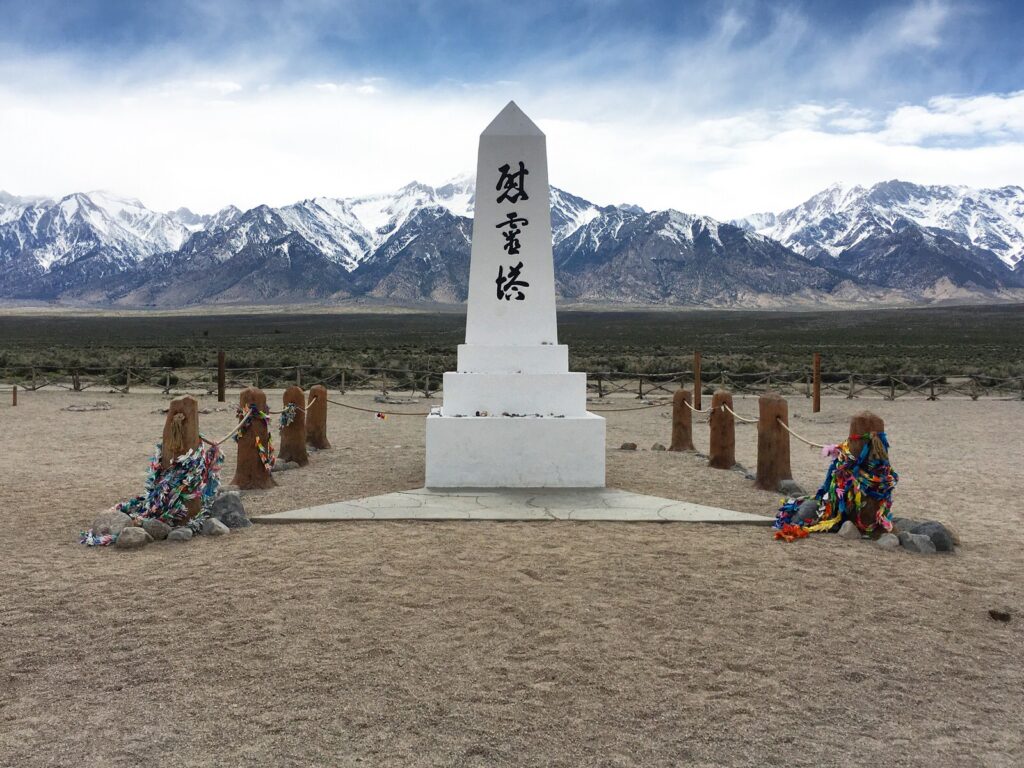
Manzanar National Historic Site
from Allison of She Dreams of Alpine
Location: Independence California, very remote location in Southern California about 3 hours North of Bakersfield
Fees: None
NPS Website
Manzanar National Historic Site is quite different from most National Park Sites in California, since it is not a hiking and outdoorsy destination, but rather a memorial to a Japanese internment camp. Manzanar actually translates to “apple orchard” in Spanish, and the Japanese internees here in the 1940s started their own fruit orchard, which still produces pears to this day.
Visiting Manzanar National Historic Site is important to bear witness to the atrocities of the involuntary incarceration of Japanese Americans during World War II, and seeing the Manzanar shrine to the dead was truly a sobering reminder of what happened here.
The grounds of Manzanar are open daily from sunrise to sunset, but the visitor center, which features exhibits and a theater showing the documentary “Remembering Manzanar,” has more limited hours. It is open Thursday to Monday from 9:00am to 4:30pm and is closed Tuesdays and Wednesdays. Manzanar National Historic Site is completely fee-free.
While Manzanar National Historic Site is not one of the most well-known destinations in this region, it is absolutely worth visiting on a California road trip in the Eastern Sierras. Manzanar is located just north of the town of Lone Pine, along US-395, so it is very close to more famous places like Mount Whitney (the tallest point in the contiguous US) and Alabama Hills. Mammoth Lakes and Yosemite National Park are also a relatively short drive away, so make sure to make time for a stop at Manzanar when exploring the Sierra Nevada.
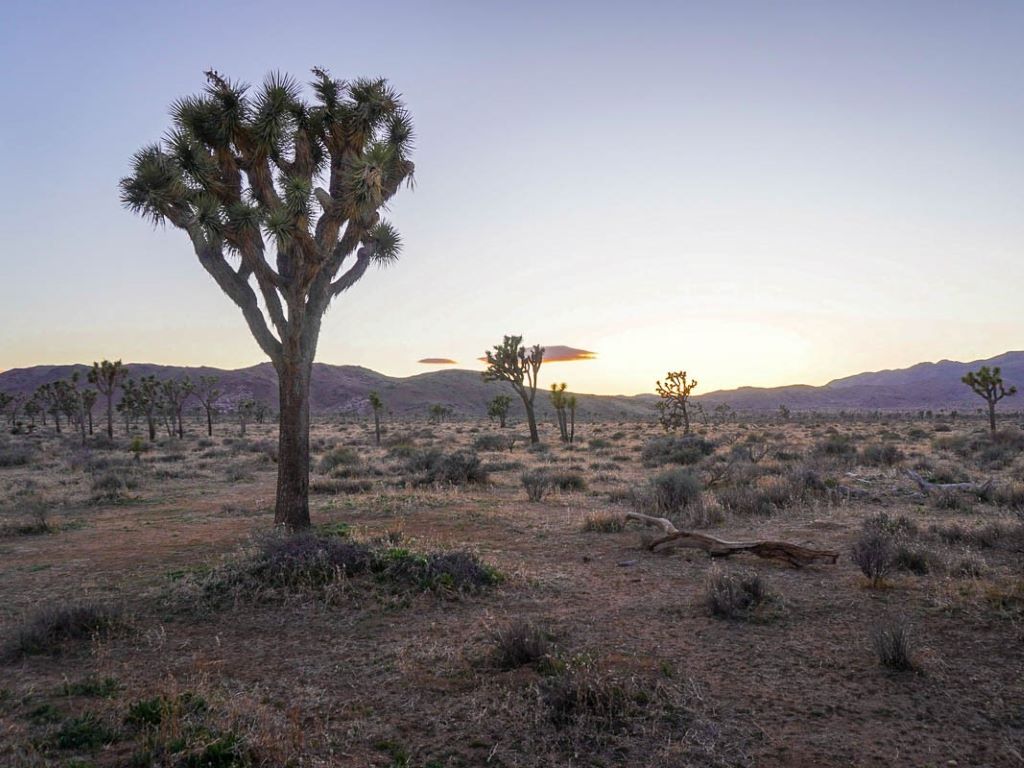
Mojave National Preserve
recommended by Jess at Uprooted Traveler
Location: Kelso, California, 3 hours North of Bakersfield
Fees: None, open Thursday through Monday, 10:00am-5:00pm
NPS Website
Mojave National Preserve, along the southeastern border of California, offers a diverse array of desert landscape, with craggy mountains, Joshua trees, and cholla cactuses.
The preserve is located just one hour southwest of Harry Reid International Airport across the border in Nevada, making this an excellent addition to any Las Vegas itinerary. Alternatively, it’s about three hours east of Bakersfield or three and a half hours northwest of Los Angeles.
My husband and I went on an epic road trip across the southwestern United States and spent several nights camping in the Mojave National Preserve’s excellent campgrounds. The scenery here is stunning and the area is arguably even more beautiful at night, thanks to the jaw-droppingly beautiful stargazing. We also found the National Preserve to be a lot less crowded than some of the surrounding national parks, like Joshua Tree or Death Valley.
While you’re in the park, be sure to see its groves of Joshua trees—it’s actually home to more of them than anyplace else on the planet—yup, even its neighbor, Joshua Tree National Park! The best place to see them in the park is along Clima Road, which offers the largest Joshua tree forest on the planet!
If you want to get your heart rate up, consider hiking the Kelso Dunes, a short but steep hike up sand dunes. While the trail can be challenging, the panoramic views of the surrounding desert and mountains from the top of the dunes—and getting to run your way down the sand dunes—is definitely worth it. In fact, it’s largely considered to be the best viewpoint in the park.
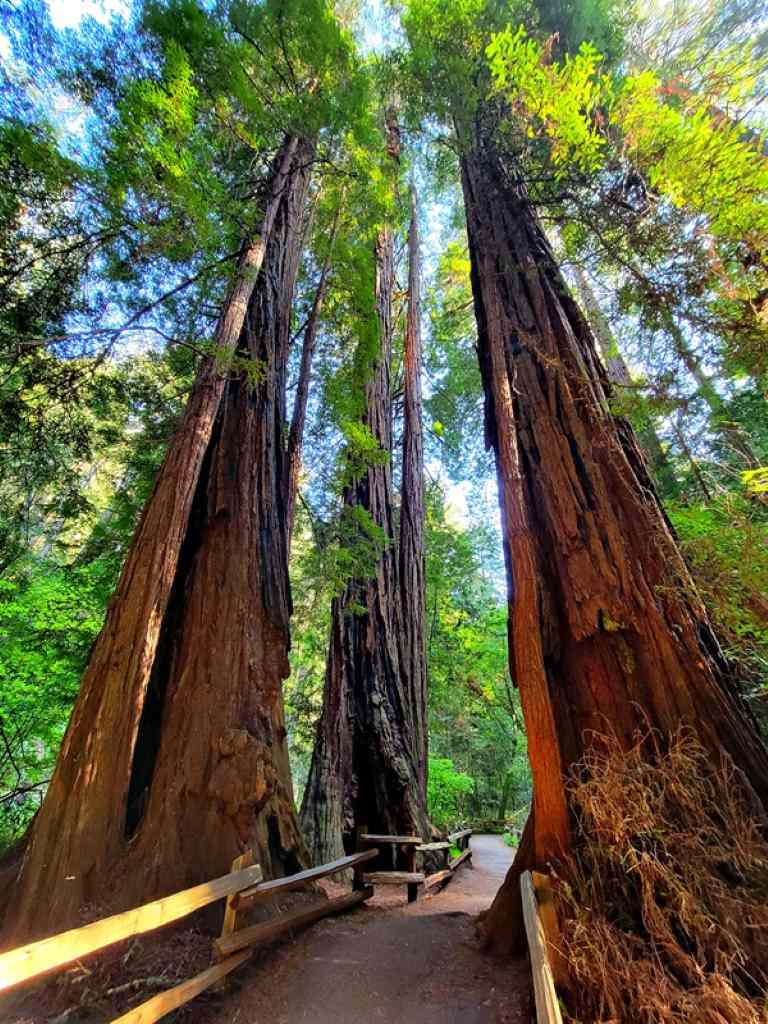
Muir Woods National Monument
from Daria at Explore Baja California
Location: San Francisco, part of the Golden Gate National Recreation Area
Fees: None, open Thursday through Monday, 10:00am-5:00pm
NPS Website
Part of California’s Golden Gate Recreation Area, Muir Woods is one of the most popular getaways from San Francisco that boasts a spectacular redwood forest with the trees dating back as much as 1,000 years.
Walking along the grove of these 250 feet trees is a surreal experience, as you get to experience one of the most spectacular natural wonders in California.
This national monument boasts a total of 6 miles of different trails, including the 5.2-mile Ben Johnson Trail, one of the most popular hikes in the park. Some of the hikes also extend to Mount Tamalpais.
Reservations for John Muir are mandatory for all vehicles as it’s one of the most popular places to visit near San Francisco. Available slots fill up very quickly, especially on weekends and major holidays. Reservations can be made at GoMuirWoods.com.
If possible, plan your trip to John Muir in advance to snag early morning reservation when this place is the most tranquil. Then you’ll be able to enjoy its serene environment without the crowds.
To get to Muir Woods National Monument, drive north on US-101 and after crossing the Golden Gate Bridge, go to Highway 1/Stinson Beach. You’ll see signs for Muir Woods along the road. Follow these signs, and you’ll eventually turn onto Muir Woods Road.
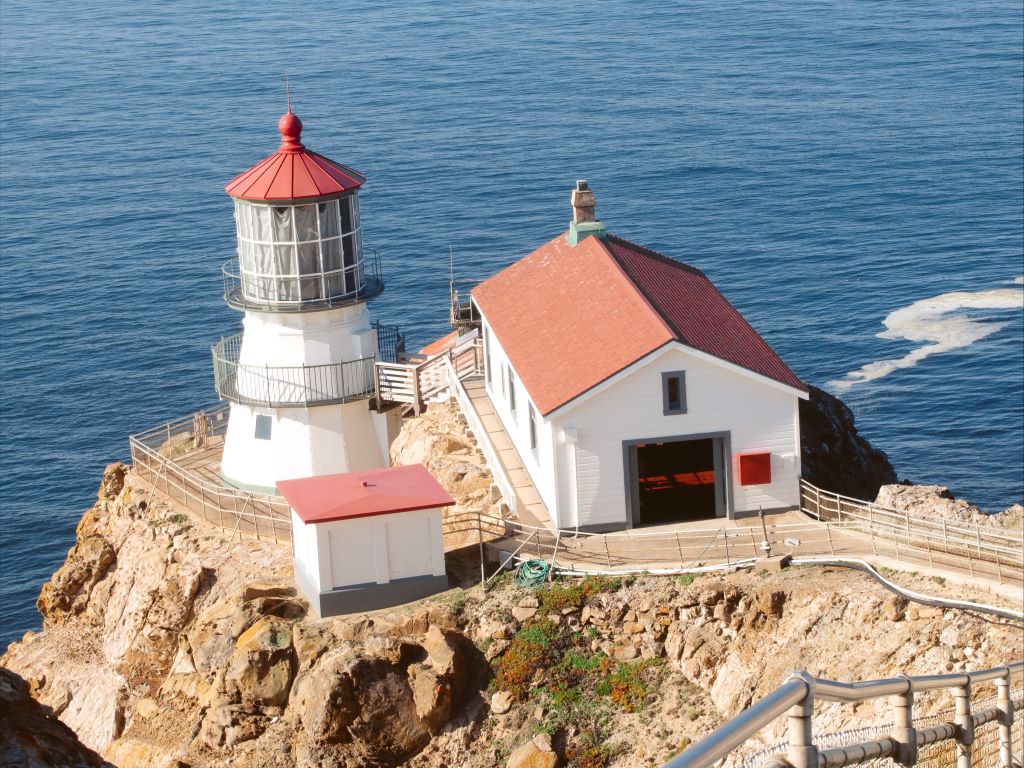
Point Reyes National Seashore
Recommended by Carrie from carriegreenzinn.com
Location: Point Reyes, 40 miles Northwest of San Francisco
Fees: None
NPS Website
The Point Reyes National Seashore is by far one of the California coast’s most beautiful National Parks. Next to the quaint town of Point Reyes, the park area covers over 71,000 acres of dramatic coastlines, sandy beaches, rocky hillsides, wildflowers, and grassy headlands.
The Point Reyes National Park is not only home to birds, marine life, and wildlife, but also houses one of the most famous lighthouses in California. Due to so many shipwrecks along the treacherous coast, a lighthouse was built in 1870 and protected sailors for over 100 years. There’s now an automatic light system to warn ships of the dangerous coastline, but the original lighthouse still stands as a museum.
I love walking down the 313 steps to the lighthouse. It’s a fascinating dose of history and the views can’t be beat! Then enjoy the many hiking trails throughout the park that all offer breathtaking views of the ocean and Tomales Bay and Drakes Bay.
Look for the giant sea lions on the sandy beaches soaking up the sun, and if you are there during whale migration season, you might get lucky! Also pay attention to the huge colony of Common Mure that look like penguins and live on the rocks off the shore.
After you explore the lighthouse area, drive back down Sir Francis Drake Blvd to the Chimney Rock Trailhead parking lot. Take the relaxing 1.75 mile hike to Chimney Rock and marvel at this boulder in the middle of the ocean. These are some of the most spectacular views in the region.
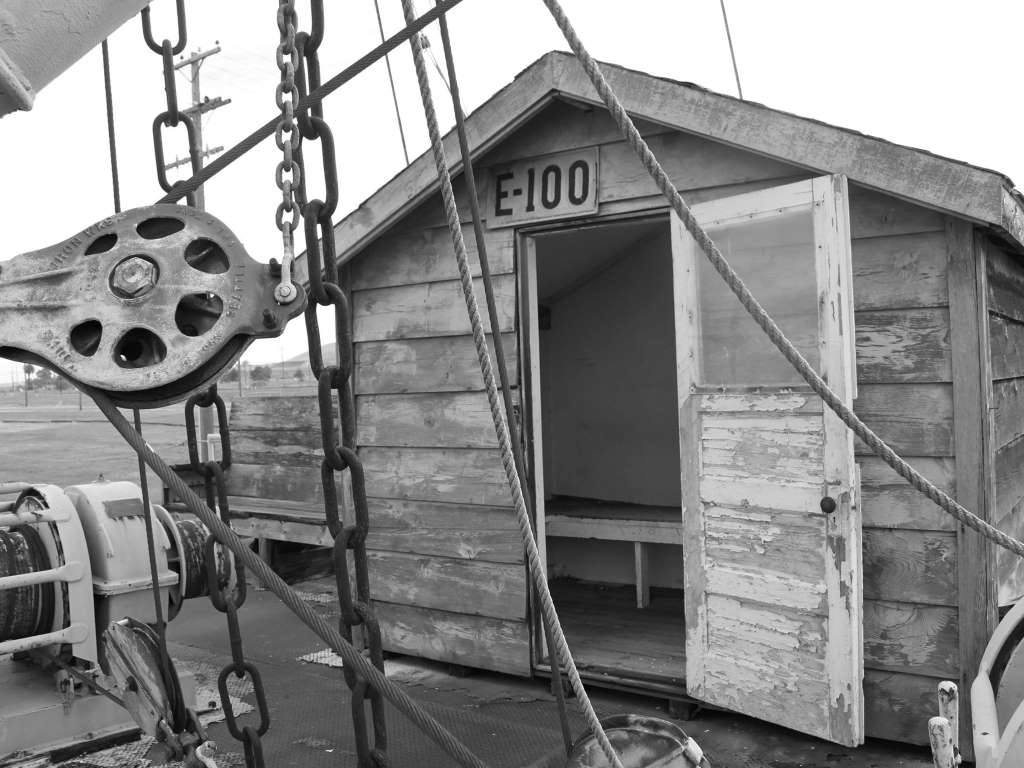
Port Chicago Naval Magazine National Memorial
Location: San Francisco, NPS shuttle from John Muir National Historic Site is the only access.
Fees: None, but reservations at least 2 weeks in advance are required with very limited hours.
NPS Website
The Port Chicago Naval Magazine National Memorial pays tribute to 320 men who were killed during World War 2 troops when 2 ships exploded. The ships were being loaded with ammunition for the war in the Pacific.
The memorial also brings to light the racial division during World War 2 when the military was segregated. Most of the men killed were part of a black brigade that were asked to work in unsafe conditions.
The memorial is located on an active military base, so a few restrictions are in place. First you must be a US Citizen and present appropriate ID to enter. And you must make a reservation at least 2 weeks in advance, with only the NPS led shuttle tours allowed.
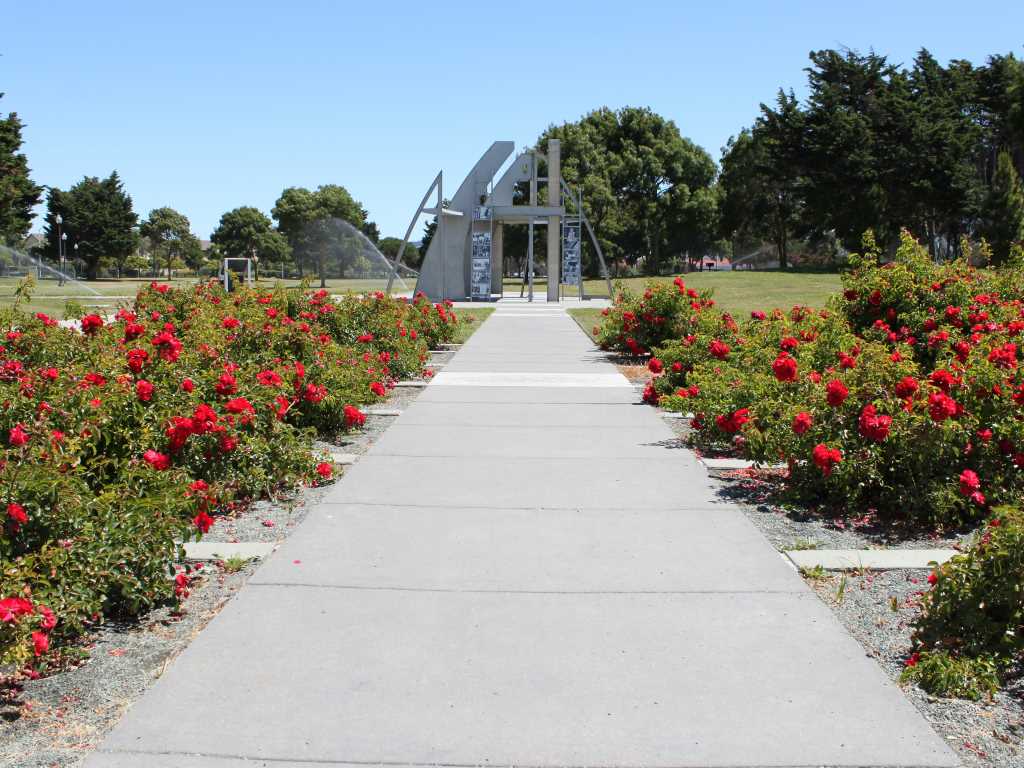
Rosie the Riveter/World War II Home Front National Historical Park
Location: Richmond, California on San Francisco Bay
Fees: None
NPS Website
The massive call to action of young American men during World War II left a huge gap in this country’s ability to produce military equipment and supplies. 6,000,000 women entered the workforce changing the culture in America forever. Minorities were recruited to take jobs that weren’t open to them previously. This National Historical Park documents the effect of integrating women and minorities into the workplace had on our world today.
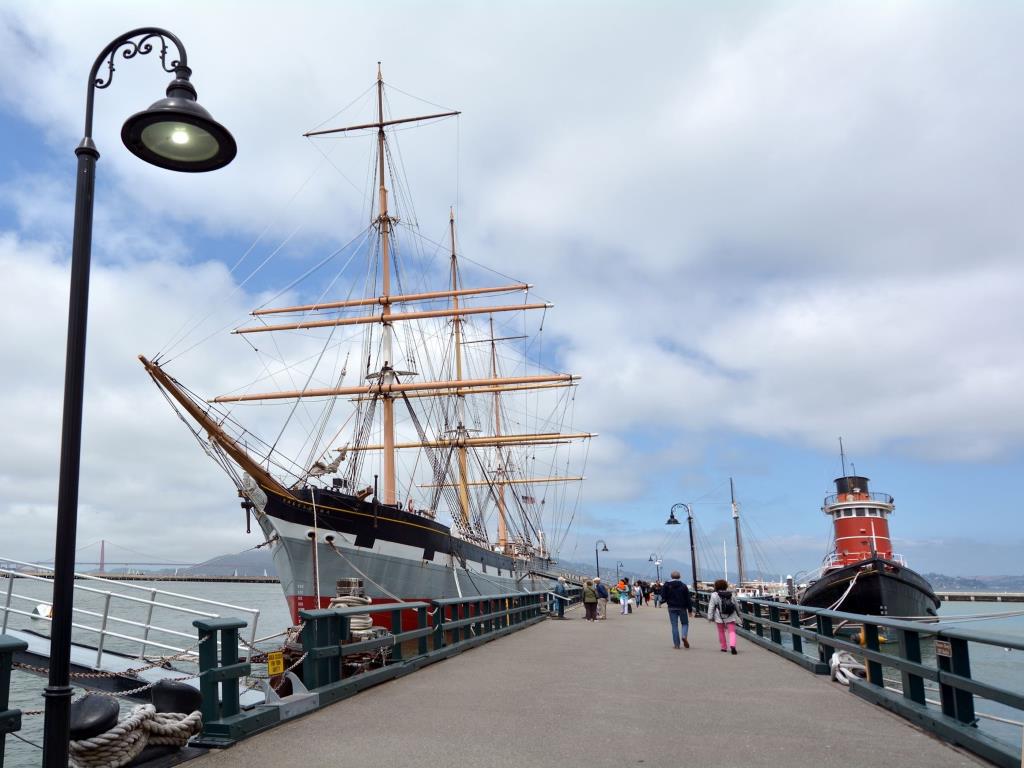
San Francisco Maritime National Historical Park
recommended by Noel with Visit California and Beyond
Location: San Francisco’s Fisherman’s Wharf
Fees: None
NPS Website
One of the most underrated national parks in California is the San Francisco Maritime National Historical Park located at Fisherman’s Wharf area. Sitting in a strategic part of Fisherman’s Wharf and fronting Aquatic Park, this historical park is composed of a collection of historical ships that originally were on display at the Golden Gate International Exposition and where eventually were acquired by the National Park Service in 1978.
Moored at the Hyde street pier, the collection is composed of the following vessels:
- The Balcutha – a square rigged sailing ship built in 1886
- The Eppleton Hall – a paddlewheel tug built in 1914
- The Alma – A scow schooner built in 1891
- The Eureka – a steam ferryboat built in 1890
- C.A. Thayer – a schooner built in 1895
- Hercules – a steam tugboat built in 1907
There is also a maritime museum that fronts the main part of Aquatic Park and is the centerpiece of the historical park along with a visitors’ center that is located at the corner of Hyde and Jefferson streets. Both buildings are registered under the National Register of Historic buildings around 1975.
Visiting the historic park buildings and vessels will give you a look into San Francisco’s historic past when these vessels where the major mode of transportation to and from the Bay Area. They performed a critical part of the commerce and growth of this city.
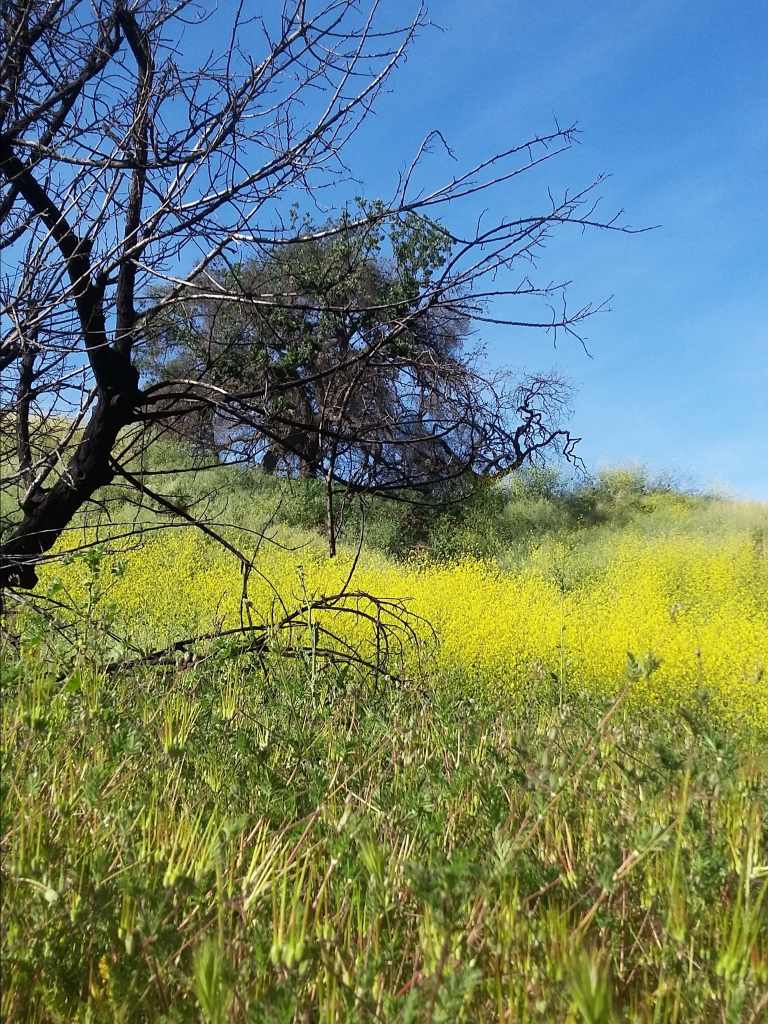
Santa Monica Mountains National Recreation Area
Recommended by Monica of This Rare Earth
Location: Northeast of Los Angeles
Fees: None
NPS Website
Located in Southern California in Los Angeles County, the Santa Monica Mountains National Recreation Area is a beautiful natural park, teeming with outdoor experiences that transport you far from LA. A visit to the park is an easy addition to a day trip to Malibu, where you’ll enjoy the stunning coastal surroundings.
The Santa Monica Mountains National Recreation Area is known for its far-reaching grasslands, shaded trails, and rugged mountains. All of these are protected and preserved for visitors to enjoy.
Some of the best things to do here are hiking the dirt trails past beautiful vistas as well as biking or horseback riding, too. There are more than 500 miles of trails to enjoy. Additionally, rock climbing is available in certain areas of the park, and classes are occasionally taught here for beginners who don’t have their own gear.
Hikers may see wildlife while visiting the park, such as rabbits, coyotes, squirrels, mice, snakes, and even the rare bobcat. Remember to give all wild animals space and never approach them, since you are a guest in their environment, after all.
The park is open year round, and activities can also occur year round. Note that summer days can get hot so start your hikes and activities early.
Visitors can also enjoy a picnic in the peaceful settings of the park, or view beautiful wildflowers in the springtime. There are plenty of outdoor enjoyment opportunities for children and adults here. Overall, visiting the Santa Monica Mountains National Recreation Area was a fantastic experience for anyone who needs a break from the busy city.
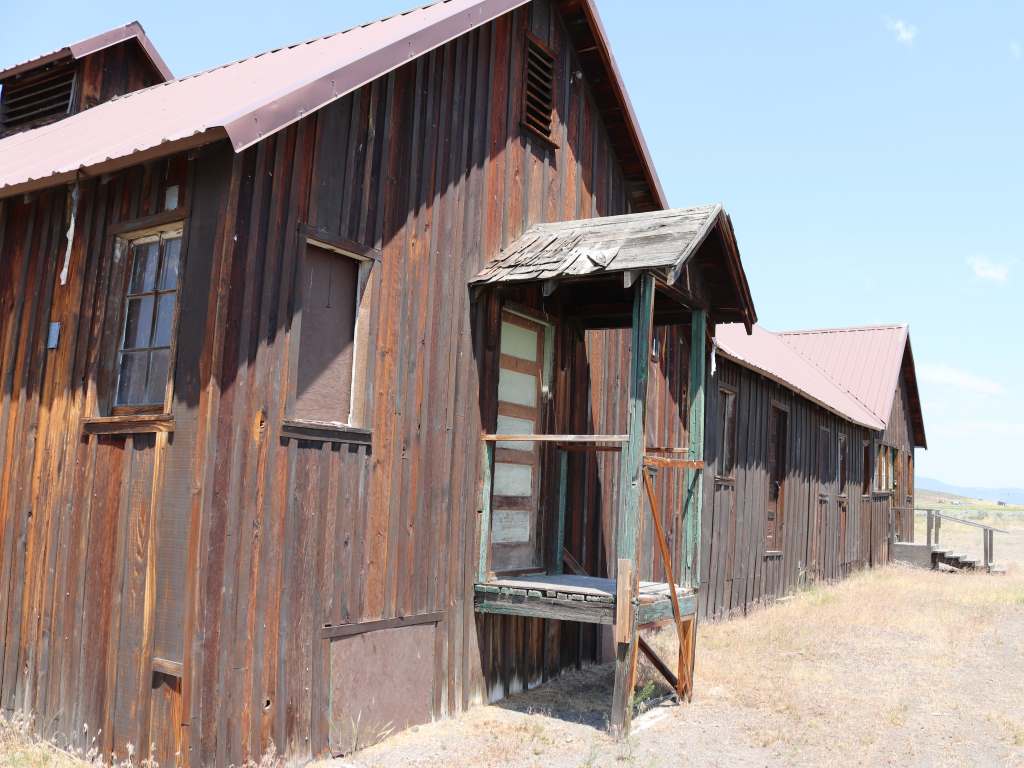
Tule Lake National Monument
Location: Tule Lake California, very remote location in Southern California about 3 hours North of Bakersfield
Fees: None
NPS Website
Tule Lake National Monument is the site of the largest, high-security segregation center during World War II when it was used to house Japanese Americans. And nearby you’ll discover the story of Camp Tulelake, which was an interment center for Japanese Americans for a few years and then became a German prisioner war camp.
The camps are a reminder of a very difficult time in American history and one we should not forget.
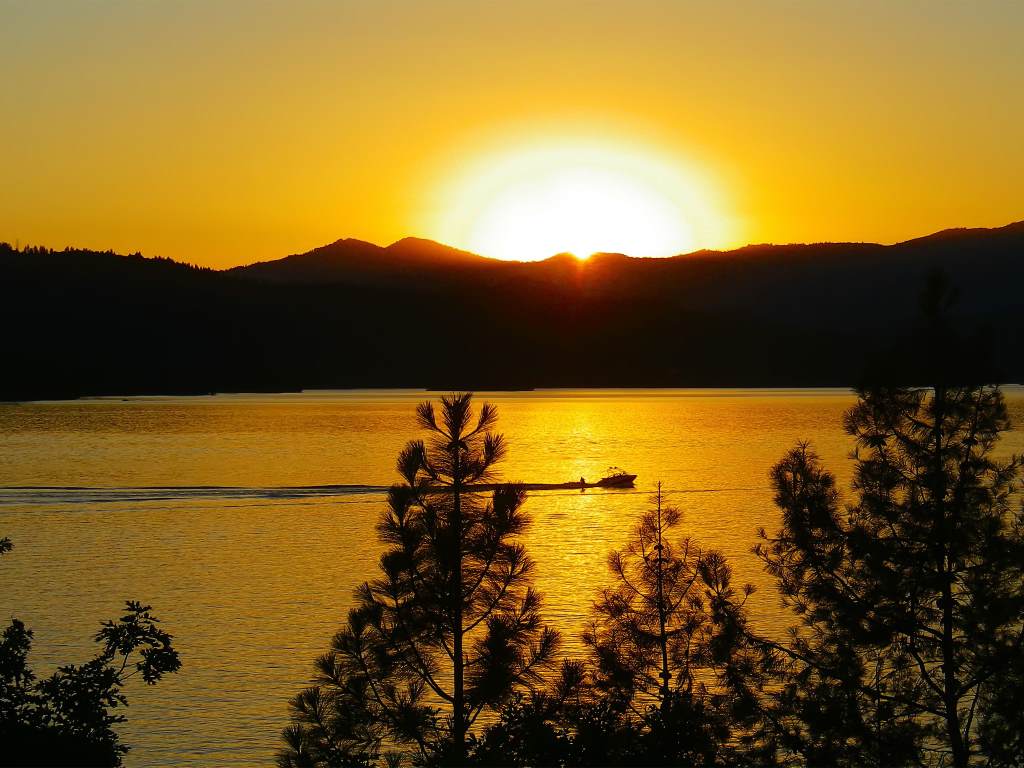
Whiskeytown-Shasta-Trinity National Recreation Area
Location: North Central California, near Redding
Fees: Yes
NPS Website
As Brad and I wove through the mountains towards Lassen Volcanic National Park, we were surprised to discover the huge Whiskeytown Lake. It made the perfect rest stop!
Whiskeytown is 3,200 acre reservoir that provides both entertainment and much needed water and electricity. And then there are 39,000 acres surrounding the lake where you can camp, bike, horseback or just relax.
California National Park Road Trip Ideas
As you can see many of these National Parks are in clusters that make perfect Road Trips. Here’s a couple ideas:
San Francisco National Parks
If you are vacationing in San Francisco you can enjoy a multitude of parks over 7 days. Of course start at the Golden Gate Recreation Area where you could explore for a couple days. From here you can easily add in Fort Point National Historic Site and Muir Woods National Monument. From here you can also take the shuttle to tour Eugene O’Neill National Historic Site.
Then pop over to the San Francisco wharf area for a day of fun and visit the Maritime Museum. Tack on a 1/2 day at the Rosie the Riveter/World War II Home Front National Historical Park.
Other sites in the San Francisco area include John Muir National Historic Site and Port Chicago Naval Magazine National Memorial.
Don’t Miss the California National Parks
All of these California National Park Sites offer a wide range of breathtaking landscapes, unique wildlife, and fascinating history. They are not only important for their natural and cultural significance, but also for the recreational opportunities they provide. So, if you’re planning a trip to California, be sure to add some of these incredible California National Parks to your itinerary and experience the beauty of the Golden State firsthand.